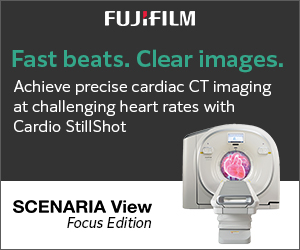Novel Imaging Detects Various Triple Negative Breast Cancer
A newly developed molecular imaging technique can identify multiple subtypes of triple-negative breast cancer (TNBC), enabling earlier and more accurate detection of this aggressive disease, according to new research published in the June issue of The Journal of Nuclear Medicine. This approach has the potential to lead to better diagnosis, treatment planning, and monitoring for patients with TNBC.
TNBC is a heterogeneous disease, meaning it encompasses a wide range of different subtypes with varying biological behaviors and clinical outcomes. This makes it harder to identify, and as a result, TNBC lags behind other breast cancer types in targeted therapeutic and diagnostic imaging agent development.
“Noninvasive imaging is essential for diagnosing and staging TNBC and predicting and measuring treatment response,” says Jason Lewis, PhD, Emily Tow Chair at Memorial Sloan Kettering Cancer Center in New York. “In our study, we sought to overcome tumor cell marker heterogeneity by developing an imaging agent that could detect multiple TNBC subtypes and improve diagnostic capacity.”
Researchers targeted extra domain A of fibronectin (EDA-FN), a stable protein in the tumor stromal environment, which is abundantly expressed in breast cancer. A monoclonal antibody-based PET tracer ([89Zr]Zr-DFO-F8) was created to detect EDA-FN. This tracer was then evaluated in vitro and in vivo in several preclinical xenograft models of multiple TNBC subtypes.
[89Zr]Zr-DFO-F8 exhibited specific, blockable EDA-FN binding activity in vitro. In vivo experiments demonstrated high tumor uptake in preclinical TNBC xenograft models. [89Zr]Zr-DFO-F8 also detected EDA-FN in subcutaneous and orthotopic TNBC xenografts and accumulated in aggressive disease concordantly with EDA-FN expression.
|
|
|
▼ ADVERTISEMENT
  |
|
|
▼ ADVERTISEMENT

Injectable Ink Heals Injuries Within Body
According to a study published in the journal Science, researchers have developed a type of injectable ink that can reform tissue, without surgery, when exposed to ultrasound.
CAR T Cell Therapy Can Slow Brain Tumor Growth
Researchers from the Abramson Cancer Center found that dual-target CAR T cell therapy can slow brain tumor growth in aggressive brain cancer. Their results are published in Nature Medicine.
Neuroimaging Maps Brain Activity While Reading
The ins and outs of how brains process letters and words have been revealed in a series of neuroimaging experiments involving healthy adults. The research is published in Neuroscience & Biobehavioral Reviews.
▼ ADVERTISEMENT
 |
▼ ADVERTISEMENT
 
“It is important to remember that plaques that don’t yet cause symptoms can rapidly evolve in ways that make them more dangerous. One of the key findings of our work is that calcified plaques may not be as harmless as once thought, since these plaques were found to be at risk of intraplaque bleeding, which in itself is the most important cause of plaque rupture and subsequent stroke.”
— Daniel Bos, MD, PhD, an associate professor in clinical epidemiology and neurovascular imaging at Erasmus MC, University Medical Center Rotterdam in the Netherlands, and author of a study of the dangers of carotid artery plaque changing over time |
|
|
COVER STORY
New PET
With dementia rates predicted to double in the coming decades, researchers are developing new methods to detect the disease and slow its progression.
FEATURE
Dynamic Detection
Standard prostate MRI tends to miss low-grade carcinomas. However, a new MRI technique combines multiple sequences to prevent such misses and enhance diagnoses.
|
|
|
| Advertising Opportunities |
Have a product or service you want to market to radiology professionals? Utilize the reach of Radiology Today Magazine to accomplish your marketing goals. Email our experienced account executives today at sales@gvpub.com or call 800-278-4400 for more information.
|
| © 2025 Radiology Today Magazine |
|
|